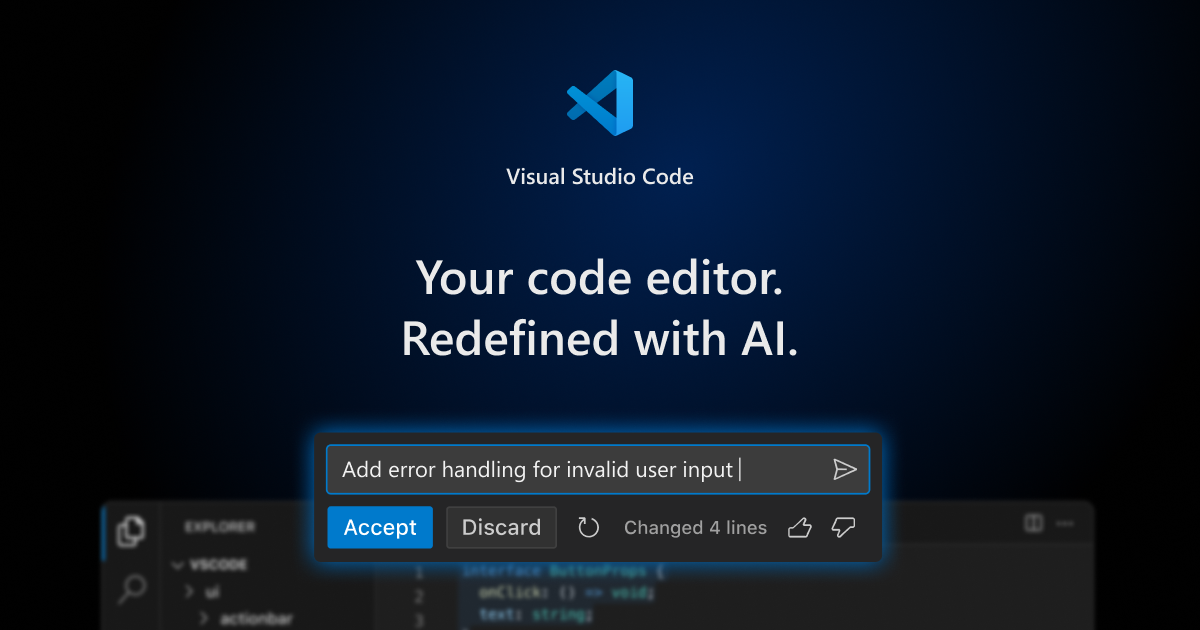- 1 1. Introduction
- 2 2. What Are Type Hints?
- 3 3. Basic Methods of Type Specification
- 4 4. Specifying Types for Complex Data Structures
- 5 5. Advantages and Limitations of Type Hints
- 6 6. Type Checking with Static Analysis Tools
- 7 7. Practical Examples of Type Hint Usage
- 8 8. Frequently Asked Questions (FAQ)
- 8.1 What Problems Arise If You Don’t Use Type Hints?
- 8.2 Does Using Type Hints Improve Execution Speed?
- 8.3 Is There a Way to Enforce Type Hints Strictly?
- 8.4 How to Address Slow mypy Checks?
- 8.5 What Resources Do Beginners Need to Learn Type Hints?
- 8.6 When Should You Use Type Hints and When Is It Acceptable to Skip Them?
- 8.7 What Practical Benefits Are There from Using Type Hints?
- 8.8 Summary
- 9 9. Conclusion
1. Introduction
Python is a programming language popular among beginners and professionals alike for its flexibility and ease of use. However, Python’s dynamic typing can sometimes impact program readability and maintainability. To address this, type hints were introduced in Python 3.5 and later versions.
Using type hints can improve code readability and quality while boosting development efficiency. In this article, we’ll cover the basics to practical applications of specifying argument types using Python’s type hints.
Characteristics of Python’s Dynamic Typing
One key feature of Python is dynamic typing, where code runs without explicitly declaring variable or function types. For example, the following code runs without issues in Python:
def add(a, b):
return a + b
result = add(1, 2) # Works normally
This flexibility enables rapid prototyping and development, but it can also lead to the following issues:
- The types of function arguments or return values may be unclear, and misuse might not trigger an error.
- As the project scales, type inference becomes harder, potentially increasing bugs.
Background for Introducing Type Hints
Type hints were introduced to resolve these issues by providing a way to add type information to code. This results in the following benefits:
- Improved readability: By specifying types, the roles of functions and variables become easier to understand.
- Use of static analysis tools: Tools like mypy can catch type errors before runtime.
- Increased development efficiency: IDE auto-completion improves, enabling faster coding.
In this article, we’ll focus on specifying argument types with type hints in Python, using concrete examples. In the next section, we’ll dive deeper into “What are type hints?”.

2. What Are Type Hints?
In Python, type hints provide a way to annotate the types of functions or variables in code. This makes code intent clearer and allows static analysis tools and IDEs to perform type checking. Type hints were introduced in Python 3.5 through PEP 484 and have been expanded in subsequent versions.
Role of Type Hints
The goal of type hints is to catch errors during code writing rather than at runtime. They are particularly useful in these scenarios:
- Improved code readability: Explicit types make the roles of functions and variables obvious at a glance.
- Easier team development: Reduces misunderstandings among developers and streamlines code reviews.
- Static analysis support: Tools like mypy and PyCharm can detect type errors early.
Example of Type Hint Notation
With type hints, you can explicitly specify types for arguments and return values like this:
Function Type Hints
def greet(name: str) -> str:
return f"Hello, {name}!"
In this code, name is explicitly typed as a string (str), and the function’s return value is also a string. Compared to code without type hints, the function’s purpose is much clearer.
Variable Type Hints
From Python 3.6 onward, you can also annotate types for variables.
age: int = 25
names: list = ["Alice", "Bob", "Charlie"]
Characteristics of Type Hints
Type hints are just annotations and don’t alter Python’s dynamic typing behavior. For instance, type mismatches won’t cause runtime errors based solely on the hints.
Example of Mismatched Types
def add_numbers(a: int, b: int) -> int:
return a + b
result = add_numbers(10, "20") # No runtime error solely due to hints
The code above will raise a runtime error, but static analysis tools (like mypy) can detect the issue in advance.
Detection Example with Static Analysis Tool
Using mypy, you might see type mismatch results like:
error: Argument 2 to "add_numbers" has incompatible type "str"; expected "int"
Advantages and Limitations of Type Hints
Advantages
- Improved code readability.
- Enhanced IDE auto‑completion.
- Ability to prevent bugs ahead of time with static analysis tools.
Limitations
- Types are not enforced at runtime (static analysis tool required).
- When complex type specifications are needed, readability may degrade.
Considerations When Introducing Type Hints
- Introduce type hints gradually In large existing projects, it’s recommended to start by adding hints to some functions or modules.
- Avoid overly complicated type specifications Overly complex specifications can harm readability, so it’s important to keep things concise.
- Utilize static analysis tools When adding type hints, using tools like
mypyorpylintalongside enhances effectiveness.

3. Basic Methods of Type Specification
By using Python’s type hints you can explicitly specify types for function arguments, return values, and variables. In this section, we’ll explain in detail the basic methods of type specification.
Specifying Argument and Return Types for Functions
By adding type hints to a function’s arguments and return value, you can clarify what types the function accepts and returns.
Simple Type Specification
Here’s a simple example where types are specified for arguments and the return value.
def add(a: int, b: int) -> int:
return a + b
aandb: receive integer type (int).- Return value: returns integer type (
int).
Cases with Multiple Arguments
Type hints can be used easily even when there are multiple arguments.
def greet(name: str, age: int) -> str:
return f"Hello, {name}! You are {age} years old."
- In this function, it receives a string type
nameand integer typeage, and returns a string type.
Type Specification for Variables
From Python 3.6 onward, you can also specify type hints for variables.
Basic Variable Type Specification
name: str = "Alice"
age: int = 30
is_student: bool = True
name: string typeage: integer typeis_student: boolean type (bool)
Variables Specified Without Initial Value
If you only specify the type for a variable without assigning an initial value, you write as follows:
height: float # Type specified but no initial value
In this case, you’ll need to assign an appropriate type‑matching value to height later.
Omission and Inference of Type Hints
Python code functions even without type hints, but when hints are absent the intent becomes harder to convey.
When No Type Hint is Present
def multiply(a, b):
return a * b
In this function, the types of a and b are unknown; therefore developers or the IDE cannot accurately infer the types.
When Type Hints are Added
def multiply(a: int, b: int) -> int:
return a * b
By adding type hints, it becomes clear that this function accepts integer type arguments and returns integer type value.
Type Specification for Collection Types
In Python you can specify type hints for collection types such as lists and dictionaries too. Using the typing module is common practice.
Type Specification for List
The type hint for a list uses List from the typing module.
from typing import List
numbers: List[int] = [1, 2, 3]
Type Specification for Dictionary
You specify the types of keys and values for a dictionary.
from typing import Dict
student_ages: Dict[str, int] = {"Alice": 20, "Bob": 25}
Example of Function Using Type Specification
Here is a function example using multiple types.
from typing import List
def calculate_average(grades: List[float]) -> float:
return sum(grades) / len(grades)
grades = [85.5, 90.0, 78.5]
average = calculate_average(grades)
print(f"Average grade: {average}")
Summary
By using type hints you clarify code intent and make bugs easier to prevent. This section explained basic type specification methods. Next is “4. Specifying Types for Complex Data Structures” where we cover more advanced methods.

4. Specifying Types for Complex Data Structures
In Python, one can specify types not only for basic collection types like lists or dictionaries but also for tuples, nested structures, optional types, etc. In this section we explain how to specify type hints for these complex data structures.
Type Specification for Lists and Tuples
Type Specification for List
The type hint for a list uses List from the typing module. By explicitly specifying the type of elements you can strictly define list content.
from typing import List
numbers: List[int] = [1, 2, 3, 4]
names: List[str] = ["Alice", "Bob", "Charlie"]
numbers: list of integer type (int)names: list of string type (str)
Type Specification for Tuple
For tuples you use Tuple to specify types. By writing the types of each element in order you can represent tuples with heterogeneous types.
from typing import Tuple
person: Tuple[str, int] = ("Alice", 25)
- In this example,
personis a pair of string type (name) and integer type (age).
Type Specification for Dictionaries
When clarifying the types of keys and values of dictionaries you use Dict.
Basic Type Specification for Dictionary
from typing import Dict
student_scores: Dict[str, float] = {"Alice": 95.5, "Bob": 87.0}
- In this example, the key is string type (
str) and the value is floating-point type (float).
Nested Dictionary
When a dictionary contains another dictionary as a value, you can also explicitly specify types.
from typing import Dict
class_data: Dict[str, Dict[str, int]] = {
"Class A": {"Alice": 85, "Bob": 90},
"Class B": {"Charlie": 88, "Dave": 92},
}
- In this example, the outer dictionary’s key is a class name (string type), and the value is a dictionary student name (string type) and score (integer type).
Optional and Union Types
Optional Type
Optional is used when an argument or return value may be either the specified type or None.
from typing import Optional
def find_student(name: str) -> Optional[str]:
students = ["Alice", "Bob", "Charlie"]
return name if name in students else None
- In this example, the function
find_studentreturns either a string type (str) orNone.
Union Type
Using Union you can specify multiple possible types.
from typing import Union
def calculate(value: Union[int, float]) -> float:
return value * 2.0
- In this example,
valuecan be integer type (int) or floating-point type (float).
Custom Types and Type Aliases
Type Alias
By using type aliases you can express complex type specifications more succinctly.
from typing import List
Vector = List[float]
def add_vectors(v1: Vector, v2: Vector) -> Vector:
return [x + y for x, y in zip(v1, v2)]
Vectoris defined as a list of floating-point type (List[float]).
Specifying Custom Classes in Type Hints
You can use your own classes in type hints as well.
class Student:
def __init__(self, name: str, age: int):
self.name = name
self.age = age
def enroll_student(student: Student) -> str:
return f"{student.name} has been enrolled."
- In this example,
Studentclass is used as a type hint.
Type Specification Using Generics
By using Generic you can define reusable types.
from typing import TypeVar, Generic, List
T = TypeVar('T')
class Stack(Generic[T]):
def __init__(self):
self.items: List[T] = []
def push(self, item: T) -> None:
self.items.append(item)
def pop(self) -> T:
return self.items.pop()
- In this example, the stack can handle an arbitrary type (
T).
Summary
In this section we explained how to specify types for complex data structures including lists, tuples, dictionaries, Optional types, type aliases, and generics. By using type hints you greatly improve code readability and safety.
In the next section “5. Advantages and Limitations of Type Hints” we will explain in detail the benefits and challenges of introducing type hints. Please continue reading.

5. Advantages and Limitations of Type Hints
Python’s type hints bring many benefits to code quality improvement. However, there are also limitations and challenges that must be addressed. In this section we will explain the advantages and limitations of type hints in detail.
Advantages of Type Hints
1. Improved Code Readability
By using type hints you make the purpose of functions and variables clear, significantly improving readability. Especially in team development other developers find code easier to understand.
Example:
def calculate_area(length: float, width: float) -> float:
return length * width
- Without type hints, it is unclear what types
lengthorwidthexpect; with hints, it becomes clear.
2. Detect Bugs in Advance with Static Analysis Tools
When using type hints, static analysis tools like mypy can check code and detect type mismatches or errors ahead of execution.
Example: Detecting type mismatches
def add(a: int, b: int) -> int:
return a + b
# mypy check results:
# error: Argument 2 to "add" has incompatible type "str"; expected "int"
result = add(10, "20") # Type error
3. Enhanced IDE Auto-Completion
By writing type hints, IDEs (eg: PyCharm or VSCode) provide proper auto-completion. This improves development efficiency and reduces mistakes.
Example:
def greet(name: str) -> str:
return f"Hello, {name}!"
greet("Alice") # IDE auto-completes argument and return types
4. Functioning as Documentation
Type hints serve as lightweight documentation embedded in code. Developers can understand function behavior based on type information without referring to external documentation.
Limitations of Type Hints
1. Types Are Not Enforced at Runtime
Type hints have no effect at Python runtime; type matching is only checked by static analysis tools. Runtime errors due to type mismatches cannot be prevented solely by hints.
Example:
def divide(a: int, b: int) -> float:
return a / b
result = divide("10", 2) # Runtime error
2. Type Specification Can Become Cumbersome
When dealing with complex data structures or generics, type hint notation can become cumbersome and reduce code readability.
Example: Complex type hints
from typing import Dict, List
data: Dict[str, List[Dict[str, int]]] = {
"group1": [{"name": 5}, {"name": 10}],
"group2": [{"name": 15}],
}
- When type hints are too detailed, there is risk of readability degradation.
3. Learning Cost Exists
For beginners not familiar with type hints, there is a learning cost as it introduces new notation. Also the usage of the many types in the typing module must be understood.
4. No Improvement in Execution Speed
Type hints are ignored at runtime, so adding strict types does not improve execution speed. If you need runtime type checks you must use separate tools.
Considerations When Introducing Type Hints
- Introduce Type Hints Gradually For large existing projects, start by adding hints to a few functions or modules.
- Avoid Over-Complex Type Specification Maintain simplicity using appropriate abstraction or type aliasing.
- Utilize Static Analysis Tools Use tools such as
mypyorpylintto maximize the effect of type hint introduction.

6. Type Checking with Static Analysis Tools
Although Python’s type hints don’t affect runtime behavior, using static analysis tools enables detection of type mismatches and potential bugs. In this section, we focus on the representative tool “mypy”, which pairs well with type hints, and explain how to use it.
What Are Static Analysis Tools?
Static analysis tools perform type and syntax checks without executing code. When used in conjunction with type hints, the following errors or issues can be discovered in advance:
- Type mismatches in arguments or return values
- Calls to undefined variables or functions
- Identification of ambiguous type usage
Installing and Basic Usage of mypy
1. Installing mypy
First, install mypy using pip.
pip install mypy
2. Performing Type Checks with mypy
Analyze a Python script containing type hints using static analysis. Run the command as follows:
mypy your_script.py
Example: If you analyze the script example.py containing the following code:
def add(a: int, b: int) -> int:
return a + b
result = add(10, "20") # Type error
When you execute the command you will see an error like the following:
error: Argument 2 to "add" has incompatible type "str"; expected "int"
3. Basic Options for mypy
mypy provides various options to customize type checking flexibly.
--strict: Enables strict type checking.--ignore-missing-imports: Ignore import errors.--disallow-untyped-defs: Disallow functions without type hints.
Example: To enable strict checking:
mypy --strict example.py
Using Type Checking in IDEs
1. Type Checking in PyCharm
PyCharm is an IDE that integrates type hints with mypy. Using PyCharm provides the following advantages:
- Real-time detection of type errors while writing code.
- Auto-completion based on type hints.
Configuration steps:
- In PyCharm: “Settings” → “Languages & Frameworks” → “Python” → “Type Hinting” and enable type hints.
- Configure mypy as necessary.
Built for web, data, and AI/ML professionals. Supercharged w…
2. Type Checking in Visual Studio Code (VSCode)
VSCode also supports type hints. By installing the “Python” extension you can enable type checking and completion based on hints.
- Install the “pylance” extension to enable real-time type checking based on type hints.
Visual Studio Code redefines AI-powered coding with GitHub C…
Practical Example Using Type Checking Tools
Example 1: Mandatory Argument Type Check
def greet(name: str) -> str:
return f"Hello, {name}!"
print(greet(123)) # Type error
Using mypy, you will see that the argument type is mismatched.
Example 2: Optional Type Checking
from typing import Optional
def find_student(student_id: int) -> Optional[str]:
students = {1: "Alice", 2: "Bob"}
return students.get(student_id)
student_name = find_student(3)
print(student_name.upper()) # Type error (NoneType has no upper)
mypy will consider the possibility of None for the Optional type and detect lack of a None check as an error.
How to Operate Type Checking
1. Automate Type Checking
By integrating mypy into your CI/CD pipeline you can automate type checking. This prevents problematic code from being deployed during pull requests.
2. Integrate into Development Workflow
By setting rules like the following you can operate type hints effectively:
- Always add type hints to new code.
- Regularly analyze the entire project using mypy.
- If type hints are ambiguous, add comments or documentation to supplement.
Summary
By using static analysis tools you can apply type hints effectively and enhance code quality and early bug detection. Especially with mypy you can build a development environment that maximizes the effect of type hints. In the next section “7. Practical Examples of Type Hint Usage” we will explain concrete designs of functions and classes using type hints.

7. Practical Examples of Type Hint Usage
Here, we explain how type hints can be used in real‑world practice through concrete examples. Type hints are more than just documentation; they are a powerful tool to improve code readability and safety. In this section we show how to use type hints in functions, classes, variable arguments, and various cases.
Using Type Hints in Functions
1. Basic Function Type Specification
By using type hints you can clearly express function input and output.
Example:
def calculate_area(length: float, width: float) -> float:
return length * width
area = calculate_area(5.0, 3.0)
print(f"Area: {area}")
- Arguments
lengthandwidthare floating‑point type (float). - The return value is also floating‑point type (
float).
2. Type Specification for Default Arguments
Even if you have default arguments you can specify type hints.
Example:
def greet(name: str = "Guest") -> str:
return f"Hello, {name}!"
print(greet()) # "Hello, Guest!"
print(greet("Alice")) # "Hello, Alice!"
nameis string type and has default value"Guest".
Type Hints for Variable‑Length Arguments
1. Variable‑Length Arguments (*args) Type Specification
When accepting multiple arguments use *args and specify their types.
Example:
from typing import List
def sum_numbers(*numbers: int) -> int:
return sum(numbers)
print(sum_numbers(1, 2, 3)) # 6
*numbersreceives a tuple of integer type (int).
2. Keyword Arguments (**kwargs) Type Specification
When using keyword arguments you can specify type hints too.
Example:
from typing import Dict
def display_info(**info: str) -> None:
for key, value in info.items():
print(f"{key}: {value}")
display_info(name="Alice", age="25", city="New York")
**infois a dictionary (typeDict[str, str]) where the key is string type and the value is also string type.
Type Hints in Class Design
1. Type Hints Inside the Class
By adding type hints to class attributes and methods you clarify the design.
Example:
class Student:
def __init__(self, name: str, age: int):
self.name = name
self.age = age
def introduce(self) -> str:
return f"My name is {self.name}, and I am {self.age} years old."
student = Student("Alice", 20)
print(student.introduce())
nameandageare string type (str) and integer type (int) respectively.introducemethod returns string type (str).
2. Specifying Type Hints for Class Attributes
You can also write type hints for class‑level attributes.
Example:
class School:
name: str = "Default School"
students: int = 0
nameis string type (str),studentsis integer type (int).
Practical Use of Type Aliases
Using type aliases allows you to reuse complex types concisely.
1. Defining Type Aliases
from typing import List
Vector = List[float]
def calculate_magnitude(vector: Vector) -> float:
return sum(x**2 for x in vector) ** 0.5
vector = [1.0, 2.0, 3.0]
print(calculate_magnitude(vector)) # 3.7416573867739413
Vectoris defined as a list of floating‑point type (List[float]).
2. Applying Custom Types
You can apply type aliases to complex data structures as well.
Example:
from typing import Dict, List
StudentScores = Dict[str, List[int]]
scores: StudentScores = {
"Alice": [90, 85, 88],
"Bob": [72, 75, 78]
}
StudentScoresis a dictionary whose key is string type and value is a list of integer types.
Designing Safe Code Using Type Checking
Combined with type checking tools (like mypy), you can enhance the safety of practical code.
1. Checking Types That May Include None
Use Optional to explicitly allow an argument to be None.
Example:
from typing import Optional
def find_student(name: str) -> Optional[str]:
students = ["Alice", "Bob", "Charlie"]
return name if name in students else None
- The function
find_studentreturns string type (str) orNone.
Summary
In this section we showed practical examples including functions, classes, and variable-length arguments of type hint usage. By using type hints correctly, you can improve code readability, maintainability, and prevent bugs in advance.
The next section “8. Frequently Asked Questions (FAQ)” will clarify common questions and misunderstandings regarding type hints.

8. Frequently Asked Questions (FAQ)
Type hints in Python are a useful tool, but when using them for the first time questions and misunderstandings may arise. This section addresses frequent questions regarding type hints and provides clear answers.
What Problems Arise If You Don’t Use Type Hints?
Python code works even without type hints, but the following problems are more likely to occur:
- Reduced readability If the types of functions or variables are not stated, other developers take longer to understand the code.
def add(a, b):
return a + b
In this function, types of a and b are unknown, so it is unclear whether numeric or string type is expected.
- Increased bugs Because types are unclear, passing invalid types may not generate immediate errors and runtime bugs may increase.
Does Using Type Hints Improve Execution Speed?
No, type hints do not affect execution speed.
Type hints are merely “hints” and do not affect Python’s runtime behavior. Type checking is done not at runtime but by static analysis tools (eg: mypy).
Is There a Way to Enforce Type Hints Strictly?
While Python does not provide a mechanism to enforce type hints, you can implement rules like “disallow code without type hints” as follows:
- Using static analysis tools By using mypy’s
--strictoption you can detect functions without type hints as errors.
mypy --strict your_script.py
- Making it a rule in code reviews or CI/CD By configuring pull request or CI/CD pipeline rules to check for presence of type hints, you can enforce usage.
How to Address Slow mypy Checks?
In large projects, mypy type checks may become slow. You can improve performance using the following methods:
- Use incremental mode The
--incrementaloption performs checks only for changed parts.
mypy --incremental your_script.py
- Ignore some modules You can exclude external modules that don’t require type checking using
--ignore-missing-imports.
mypy --ignore-missing-imports your_script.py
What Resources Do Beginners Need to Learn Type Hints?
You can efficiently learn the fundamentals and applications of type hints by using the following resources:
- Python Official Documentation (PEP 484) Basic specifications of type hints are explained. PEP 484 – Type Hints
- Python Official Tutorial on Type Hints Detailed usage examples are explained. Typing Module
- Online Learning Platforms On Udemy or Coursera search for “Python type hints” courses to learn systematically.
When Should You Use Type Hints and When Is It Acceptable to Skip Them?
Situations Where You Should Use Type Hints:
- Team development By using type hints you allow other developers to more easily understand code.
- Large‑scale projects The larger the project becomes, the more type hints help prevent bugs.
- Exposed external APIs or libraries When you provide functions or classes for others to use, type hints help users understand usage.
Situations Where You May Skip Type Hints:
- Small‑scale, short‑lived scripts e.g., simple data analysis or automation scripts.
- Prototype code During the prototyping phase you might omit type hints to accelerate development.
What Practical Benefits Are There from Using Type Hints?
By leveraging type hints you gain the following practical benefits:
- Early bug detection Static analysis based on type hints prevents bugs before execution.
- Improved development efficiency IDE auto‑completion improves speed of code writing and reduces mistakes.
- Improved maintainability With clear types, future readers of your code understand it more easily.
Summary
In this section we answered common questions about type hints. Type hints are easy to learn and can greatly improve developer productivity and code quality. Combined with static analysis tools you can extract their full benefit.

9. Conclusion
In this article we explained in detail how to specify argument types using Python’s “type hints” from basics through advanced usage, tool usage for type checking, and real‑world usage examples. Finally we summarize the content and share key points for effective use of type hints.
Importance of Type Hints
Type hints preserve Python’s dynamic‑typing flexibility while delivering the following many advantages:
- Improved readability By specifying type information in code, the roles of functions and variables become clear at a glance.
- Bug prevention via static analysis Detecting type mismatches before execution reduces potential bugs.
- Enhanced development efficiency Using IDE auto‑completion speeds up code writing and reduces errors.
- Improved maintainability Clear types mean future readers of your code understand it more easily.
Steps for Introducing Type Hints
Here are the steps for effectively incorporating type hints:
1. Introduce Gradually
If adding type hints to an existing project, the following sequence is useful:
- Add type hints to key functions or classes.
- Use static analysis tools (e.g., mypy) to automate type checking.
- Share type‑hint usage rules within your team.
2. Avoid Excessively Complex Type Specifications
If types get too complex, readability can drop. Use proper abstraction or type aliases to keep it concise.
3. Use Static Analysis Tools
Introduce tools like mypy or PyCharm to implement quality control using type hints.
Points for Effective Type Hint Utilization
Consider the following to maximize the value of type hints:
- You do not need to add type hints everywhere In small scripts or prototypes you may skip them. The key is balance.
- Use official Python resources Referring to Python’s official docs (PEP 484,
typingmodule) helps you learn the latest specifications. - Choose type‑checking tools suited to your environment Select the appropriate tools (e.g., mypy, pylance) according to your team size and project nature.
Future of Type Hints
Python’s type hint system may evolve further. With new Python Enhancement Proposals (PEPs) emerging, even more flexible and expressive type specifications may become possible. By learning early and understanding how to use them, you can gain an advantage in future Python projects.
Next Steps
Now that you’ve learned the basics and applications of type hints, take the following steps:
- Add type hints to your own project.
- Introduce static analysis tools and perform type checking.
- Refer to official documentation and resources on type hints and deepen your knowledge.
Finally
Python’s type hints are a very powerful tool for developers. Use the knowledge gained from this article to elevate your real‑world coding efficiency and quality. By mastering correct usage of type hints you can write robust, maintainable code while leveraging Python’s flexibility.






